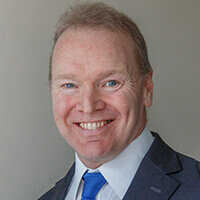Communication Skills - Accurate Language
Communication skills - Accurate language
Many people have trouble expressing themselves. They say: "I know what I mean but I can't explain it!"
But you need to be able to express yourself with both clarity and accuracy.
Here is a rule that will help you to get better results.
Clarity is a virtue - vagueness is a vice!
Vagueness is bad for business.
Vague and ambiguous communication will cause you to waste too much time, money and effort.
Vague and ambiguous communication is defined as "communication that can properly be interpreted in MORE than one way"
If you say "can you send those documents to me as soon as possible?"
The other guy agrees that he will send them to you "A.S.A.P"
You close the conversation on an agreement.
But you also have a misunderstanding.
Why?
Because your interpretation of a.s.a.p. is not the same as his interpretation of a.s.a.p.
So you have created an "Agreement based on a misunderstanding".
Agreements based on misunderstandings
Unfortunately, "agreements based on misunderstanding" is a common phenomenon.
You cannot afford to have too many agreements based on misunderstandings.
Agreements based on misunderstandings are caused by the over use of vague and ambiguous language.
In language; Clarity and accuracy is The Good!
Discipline yourself to be as clear and accurate in your use of English as you possibly can.
What specific steps can you take to improve your clarity?
Here are five steps you can take today:
- Favour the specific term over the vague term
- Use numbers
- Define your terms
- Distinguish between affirmative and negated statements
- Make your conclusions obvious
1. Favour the specific term over the vague term
You always have a choice over which words to use to express the thought you have.
Here is the principle to remember:
Choose the more specific word over the more abstract word.
Example:
Which of the following pairs are more specific?
- Motor car / ford focus
- Flowers / roses
- Furniture / table
- Booze / champagne
- Jewellery / neckless
- Looks nice / looks proportionate and symmetrical
Choose the more specific word over the more abstract word.
2. Use numbers
Question:
What is the best way to improve the accuracy of your language?
Answer:
Use numbers. The use of numerals is the easiest and most effective way to improve your clarity.
Why?
Because using numbers introduces exact quantities, exact times; they carry more specific information. Numbers improve the quantitative nature of your language: they make it less prone to mis-interpretation.
What is wrong with the following statements?
How can you fix the problem using numbers?
- Can you get those items to me as soon as possible?
- Would you please arrange for some paint to be delivered to my home address?
- Would you put it up a bit higher?
- I was hoping you might give me a reduction for cash.
- I want to improve my sales.
- Are you able to make that any larger?
3. Define your terms
There are many words that have multiple interpretations.
They are often used but ill-defined words.
Examples of words that are often used but ill defined:
- Fair
- Leadership
- Quality product
- Good for you
- Proper education
- Social justice
For example:
You will agree that fairness causes many arguments because your version of what constitutes fairness does not agree with my definition of fairness.
Before you can persuade or convince anyone you must first clarify your own thinking by formulating clear definitions of all of your major terms.
How to generate definitions
To generate definitions you need to take two steps:
- Name the general class
- Name the four distinguishing characteristics
Example of generating definitions using the above two step method
Define "table"
Name the general class "A table is an item of furniture".
Name the four distinguishing characteristic;
Distinguished by:
- Flat horizontal work surface.
- Set at about waist height.
- Supported by one or more legs.
- For the purpose of working eating or supporting objects.
Define "logic"
Name the general class; logic is a method of thinking.
Name the four distinguishing characteristics.
Logic is a method of thinking distinguished by:
- Being based on observational facts
- Systematic
- Non emotionalised
- Non contradictory
4. Distinguish between affirmative and negated statements
An affirmative statement says what it IS.
A negated statement says what it IS NOT.
The idea is:
To use affirmative, rather than negated statements
Use the affirmative
Affirmative language is talking and thinking about what you do want, would like, and do believe in.
Negated language is talking and thinking about what you do not want, would not like, and do not believe in.
Too many people focus their minds on their troubles and the causes.
They talk for too long about what will not work and why.
They are stuck in the mental habit of negation.
Continually thinking about what you do not want, is not good enough.
To help others, learn to have them focus their minds on what they do want.
Negation errors
Negation is trying to have someone understand:
- What you want -by telling them what you do not want.
- What they should do - by telling them what they should stop doing.
- What you think is true- by telling them what you think is false.
- What you agree with - by telling them what you oppose.
Negation is inherently ambiguous if used alone (without the affirmative).
Saying "X is wrong" leaves completely open the question of "What is right?".
Too much negation will tie you up in NOTs
5. Make your conclusions obvious
When communicating you must make two things clear:
- What you think i.e. your conclusions
- Why you think it i.e. your reasons
Make a clear distinction between your conclusions and your reasons.
Make your conclusions clear and distinct.
Reinforce your conclusions with sound reasoning.
Make your conclusion clear.
You can place your conclusion first or last: either way is good.
Example of "conclusion first" writing
Wealth should be distributed more evenly.
The purpose of distributing wealth must be to produce more happiness. The same amount of wealth will yield more happiness if it is distributed widely, than if it is distributed with great inequality.
Example of "conclusion last" writing
The North American wildlife federation reports those sightings of the bald eagle population between 2008 and 2009 has increased by 35%. In the watch of 2009, 13,123 sightings of bald eagles were reported, 3,403 over the previous year's count.
This indicates that there has been a considerable growth in the bald eagle population.
Example of poor writing
There is no conclusion in the following -This is bad
The computer is still evolving. New products and programmes are being released every year. In recent years the demand for computer literate personnel has increased. Students are graduating in computer science at a greater rate than ever before. Some companies find that these graduates require further training before they can do practical problem solving in the context of a real business.
Make your conclusion obvious
Take these five steps today:
- Favour the specific term over the vague term
- Use numbers to express ideas quantitatively
- Define your terms
- Distinguish between affirmative and negated statements
- Make your conclusions obvious
For more information about communication skills training visit the Corporate Coach Group website
Definition: Accurate language
Accurate language is a business communication skill that uses precise words, numbers, clear definitions and direct positive statements so every listener shares one meaning. It removes vagueness, saves time and stops costly errors by making each request, fact or view open to only one reading.
Show CG4D Definition
- Chooses precise, concrete words over vague terms
- Quantifies ideas with numbers wherever possible
- Defines every key term before use
- Gives positive statements and clear conclusions
Article Summary
Use clear, exact words, add numbers, define ideas, speak in positives and state your point first or last. Accurate language stops costly mix-ups and saves time and money.
Frequently Asked Questions
Here are some questions that frequently get asked about this topic during our training sessions.
What is vague language in business communication?
How can I spot vague words and choose specific ones in my emails?
Why do numbers make language more accurate and clear?
Which everyday terms need clear definitions at work?
How do affirmative statements help avoid misunderstandings?
Why should I state my conclusion clearly when I write?
What five quick steps will help me use accurate language today?
Thought of something that's not been answered?
Did You Know: Key Statistics
Grammarly’s 2024 State of Business Communication says UK staff lose on average 7.5 hours each week through unclear messages, costing firms about £11,600 per worker every year. The 2024 Pulse of the Profession study by the Project Management Institute shows that 28% of failed projects break down mainly because of poor communication.Blogs by Email
Do you want to receive an email whenever we post a new blog? The blogs contain article 5-10 minutes long - ideal for reading during your coffee break!
Further Reading in Communication - Clear Communication
-
Communication skills - Accurate language
Master accurate language at work with five clear steps: use specific words, numbers and defined terms, speak positive, state conclusions and cut costly errors.
Read Article > -
How can I make my communications skills better?
Improve communication skills in nine steps: stay focused, be specific, use numbers, ask smart questions and add engaging voice and body language to win trust.
Read Article > -
Training to Improve Your Communication Skills
Learn nine simple steps to improve communication skills: clear speech, active listening, confident voice, smart body language and polite style. Build trust now.
Read Article > -
How to be a good conversationalist
Learn how to be a good conversationalist with easy tips on positive conversation, honest praise and motivating talk that builds rapport and avoids negativity.
Read Article > -
Better Work Relationships
Discover practical work relationship tips to align needs, balance give and take, and communicate clearly, creating fair bonds that boost results and morale.
Read Article >
Looking for Communication Skills Training?
If you're looking to develop your Clear Communication Skills, you may find this Communication Skills Training Course beneficial:
Open Training Course Pricing and Availability
Next Open Course Starts in 14 days, Cheltenham Gloucestershire, places available








